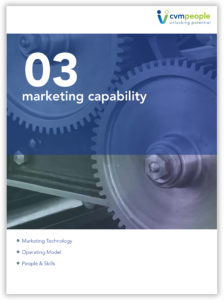

Blog: Choosing the Right Campaign Management Tool
The benefit of living in the digital age is the ability for technology to evolve at the speed (in some instances ahead) of the market and in line with changing customer demand. This presents companies with a luxury of choice that can, if not managed properly, rapidly turn into a burden.
With Pega declaring the “death of inbound and outbound” usurped by the continuous customer conversation, and IBM gearing up to bring in the AI big gun (and former Jeopardy champion) Watson to thrash your customers’ general knowledge whilst simultaneously delivering offers they couldn’t possibly resist, multiple solutions claim to solve all your problems (including some you were fairly sure weren’t problems in the first place). So how do you go about understanding which one is right for your organisation, your team, and ultimately your customers?

As always, there are a number of approaches to this dilemma, ranging from a quick review of the technologies that get your attention, a POC request from the inhabitants of the Gartner quadrant of your choice, to an extensive structured process to thoroughly assess the weighting of each solutions promised capabilities against the needs of your organisation now and (preferably) tomorrow, too.
When it comes to important strategic tools such as Campaign Management and Analytical solutions, we would always recommend going through an RFP process and, having successfully managed these for numerous customers, here are a few basic things to consider.
1. Consider your main business case(s) for the transformation, don’t be swept along by promises of a golden tomorrow at the expense of today.
For example, if your main goal is churn reduction at the contract renewal phase of the customer lifecycle, an outbound campaign is a risky, often damaging, strategy. Therefore, whilst most solutions offer both, a solution that favours highly targeted messaging and personalised offers for inbound channels, such as the contact centre or website, could be more valuable than one that clearly favours inbound functionality.
2. Ensure your strategy for channel growth is clear in the minds of all decision makers before you invite to tender.
Whilst digital may well be the future (or in most cases, the present), for many companies, a solution that prioritises digital channels over traditional is just a cost sink without a pre-existing and clearly defined digital roadmap outlining how you will increase engagement and acquisition through digital channels, and the forecasted commercial benefits.
3. The quality of inputs will play a large part in the quality of outputs.
It may not be the most exciting bit, you’re not going to get any shareholder standing ovations for it, but strong data strategy and data quality are vital. No matter how good the solution, you’ll never get the value you could get out of it, if the data it needs to function is poor. You wouldn’t (we hope) buy a supercar and try to run it on raw bitumen – you should be feeling the same way about your tech.
4. Test Everything
A good presales team will have an all singing, all dancing example of their kit up and running in no time which, at the deft and nimble fingers of experts, will make operational BAU seem tantalisingly easy.
Bringing in a 3rd party with broad experience of tools, and asking them to assess each piece on functionality and usability in conjunction with members of your own user community will help to build a much clearer picture of with to expect from each tool once the dust has settled and SI partner has long since vanished.
5. Consider the skills you have at your disposal now, and the ones you may need in the future.
Transitioning to a new tool is more than just learning the same tasks on a new UI; it’s a great opportunity to review and improve your whole operation. In conjunction with a well thought out strategic roadmap, it can and should be the catalyst that increases performance against a slew of KPIs. It pays to constantly evaluate whether the team structure, experience, and skills are best placed to maximise the potential of what can be quite a substantial investment.
An RFP with Purpose
The process of writing an RFP can be more than means to an end – it’s an opportunity to glean a much clearer view on what the business issues are that you need to address, gaps in your teams or processes, and where your strategy is taking you. It will hopefully also confirm where you’re strong, and reaffirm your plans for growth. This will put you on the front foot when making requests of potential suppliers and make it less likely for them to recommend a solution that misses the brief.
At CVM People, we’ve helped organisations large and small to understand and ultimately realise the value of effective CVM, from omnichannel campaign automation, through disciplined commercial management, to data science and analytics – there are lots of things to do before selecting the right supplier, the right kit is never a substitute for operational excellence, but it can be an enabler of huge successes. If you’d like our help, or to find out more about the services that we offer, get in touch.

